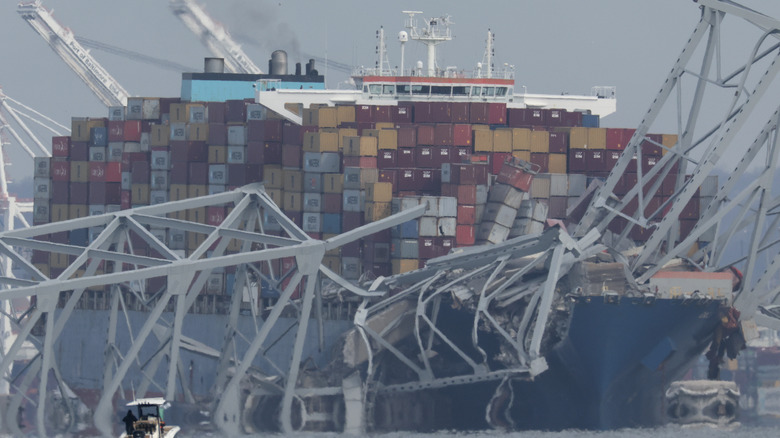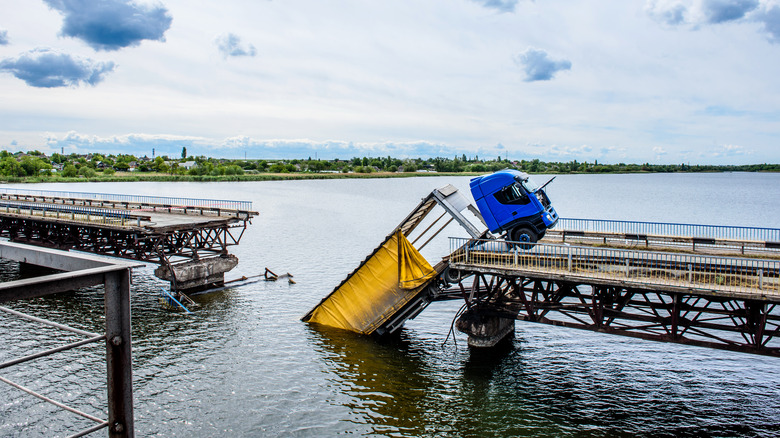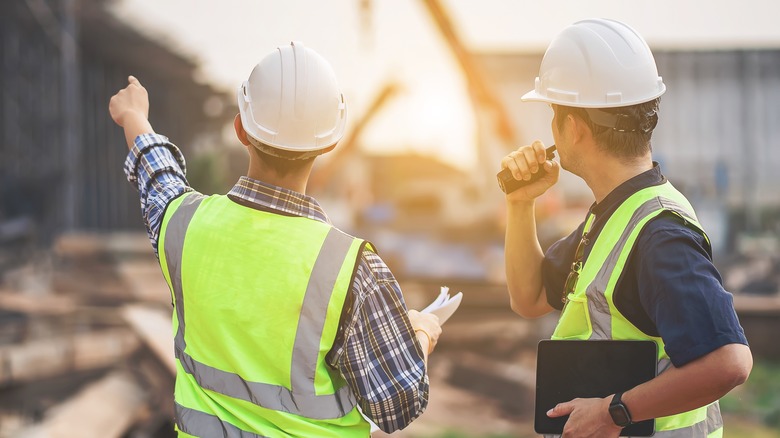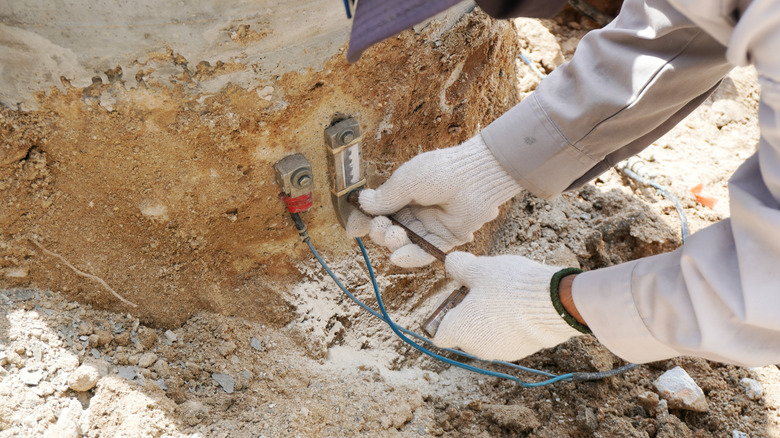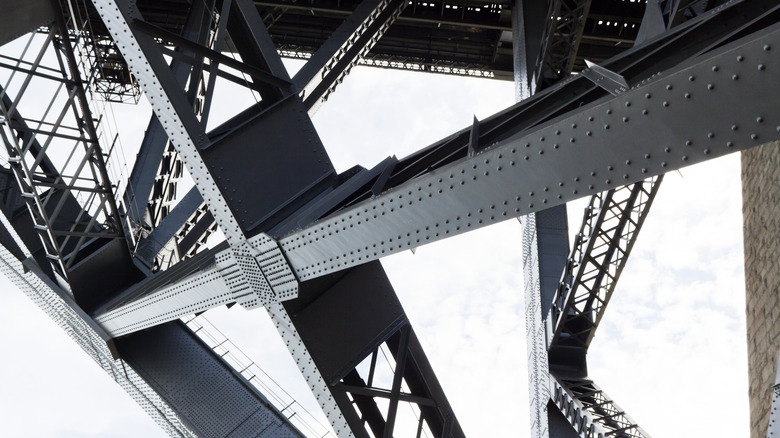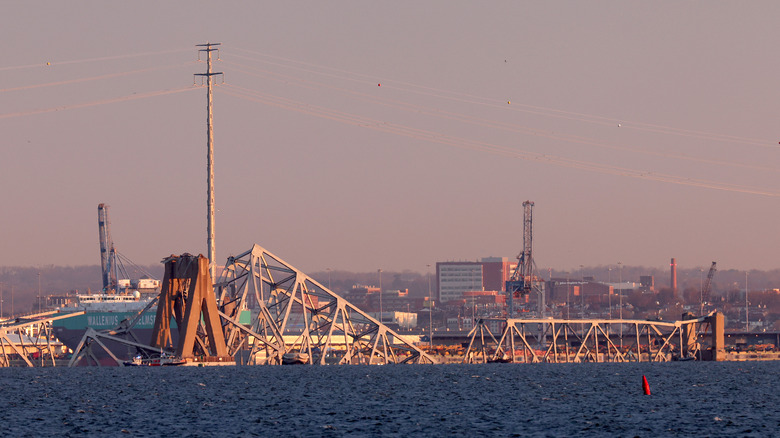Why Bridges Collapse, And The Engineering Preventing Disaster
This morning, the famous Francis Scott Key Bridge of Baltimore, Maryland, collapsed after a head-on collision with a large container ship, sending several passenger vehicles on the bridge flying into the large river below. Wes Moore, the Governor of Maryland, has already deployed emergency resources to handle the aftermath of the incident, including search and rescue of affected civilians and beginning repairs on the Baltimore Bridge.
The mere idea of such a thing happening is terrifying, for sure, but unfortunately, no bridge is invulnerable. Bridge-building is an entire sub-profession of structural engineering because it is both an extremely vital component of modern travel and transportation and because it requires a myriad of specialized knowledge. There's a reason some of history's brightest minds made their mark in the field of bridges: it's not easy. No bridge is built to collapse, of course, but sometimes forces seem to conspire against us and cause these kinds of massive incidents.
In such a circumstance, it's important to ask why bridges collapse despite our best efforts and what steps structural engineers take to reduce the likelihood of it happening again.
What causes bridge collapses
The tricky thing about building a bridge over a body of water is that it is, by its very nature, at high risk of environmental damage. When natural disasters like powerful hurricanes strike, the flooding waters and whipping winds can rip a bridge's foundations loose, reducing its overall structural integrity. Depending on the bridge's location and proximity to fault lines, a particularly severe earthquake could also shake landlocked components apart.
Sadly, a natural disaster-induced bridge collapse is actually one of the better-case scenarios because it implies that the bridge was still built to code. There are many bridges around the United States that have been deemed structurally deficient due to various man-made factors, including cheap, unreliable building materials, improper construction, or generally poor design decisions. Even if a bridge was built precisely to code, the mere passage of time can gradually wear it down, worsened further by a lack of long-term upkeep.
Even if you had a structurally perfect bridge on your hands, one that was built with the latest and greatest materials and kept in impeccable shape year-round, it may still be vulnerable. As the Baltimore bridge collapse has reminded us, it only takes one accident to undo years of work.
Engineering a better bridge
Since there's no such thing as a collapse-proof bridge, the next best option is to engineer a bridge that can mitigate disaster as best as possible. At the very bedrock of this drive are the standards and codes put forth by the American Society of Civil Engineers (ASCE). These standards dictate the absolute bare minimum for safe bridge construction and operation; a new bridge can't even be approved if its design not only meets these requirements but sufficiently exceeds them.
In addition to meeting the established standards of bridge creation, engineers are tasked with designing their bridges with both purpose and location in mind. For instance, if a bridge was built out west where fault lines and earthquakes were more plentiful, it should have a flexible body and supports to safely weather intense shaking. Similarly, if a bridge were located closer to a large body of water like a river or the ocean, it should be built up higher than recorded flood levels, as well as have openings for water to safely pass through without building up pressure.
If a bridge is going to be located in a busy port of commerce, it also needs to be equipped with reliable safety features, such as bright flare lights to illuminate it in the dark and a traffic system to keep boats from colliding with the bridge or each other.
Advanced monitoring measures
If a bridge is going to face some kind of problem sooner or later, one of the best things engineers can do is equip it with a monitoring system designed to detect and report vulnerabilities. This way, if the first signs of a problem make themselves apparent, the city can close the bridge to commercial traffic and fix things in a safe, contained environment.
One important component of such a system is a strainmeter, an electronic device attached to a metal wire or beam that measures the amount of tensile force being pressed down upon it. If a strainmeter attached to the components of a bridge detects either a tangible strain from pressing weight or an overabundance of weight on a certain part of the bridge, engineers can see the electronic readout and move to address it. Even if it's not detecting any immediate strains to the bridge, leaving a strainmeter embedded in a bridge over a long period of time can provide invaluable baseline data. Monitoring how the bridge is responding to differing levels of weight and stimulation over the years paints a very clear picture of how it's standing up to the test of time.
Rehabilitating worn bridges
A bridge is a major installation for any city, as it often serves as the only connecting point between two otherwise disconnected landmasses and a major medium of commerce and tourism. This is why any city with a bridge should make a point of keeping it not only in immaculate condition in general but also gradually adapting it to the needs of the time.
Most bridges are designed to operate for around 75 years, though intense damage from natural disasters and accidents can cut that life expectancy nearly in half. Even if the bridge is physically fine, changing city needs, such as additional lanes of travel and budget changes, may also necessitate overhauls and additional upkeep.
Thankfully, there are measures available to freshen up bridges that have been around for a while. If a bridge's girders have been bent or damaged by an accident or weight overload, for example, engineers can employ welding and heat treatments to reattach and straighten them. Girders can also be strengthened by wrapping them with concrete or steel plates. One of the more subtly important upkeep measures is surface treatment, addressing any cracks or imperfections in the bridge's driving deck. By patching, repairing, and strengthening the surface, vehicles can move across more easily, which helps to better distribute weight and pressure across the bridge and increase its lifespan.
What comes after a collapse
The state of Maryland has already mobilized resources to address the temporary loss of the Francis Scott Key bridge, but it's still going to be difficult for a while. That bridge was a major receiver of import and export from trucks on land and boats by sea, and with its remains blocking the river, commerce will take a decisive hit.
Since the bridge only just collapsed this morning, it's not currently known how long it will be before the bridge is in operational condition again, if it even can be. Depending on the scope of the damage and how much of it is salvageable, the bridge may need to be torn down and reconstructed, a process that could take months to years of planning, budgeting, and building. It's an extremely arduous process, even with the help of modern construction methods like the 3D printing process used to build a bridge in Amsterdam or experimental cement-less concrete. This just further highlights the vital importance of preventing bridge collapses from happening in the first place.
